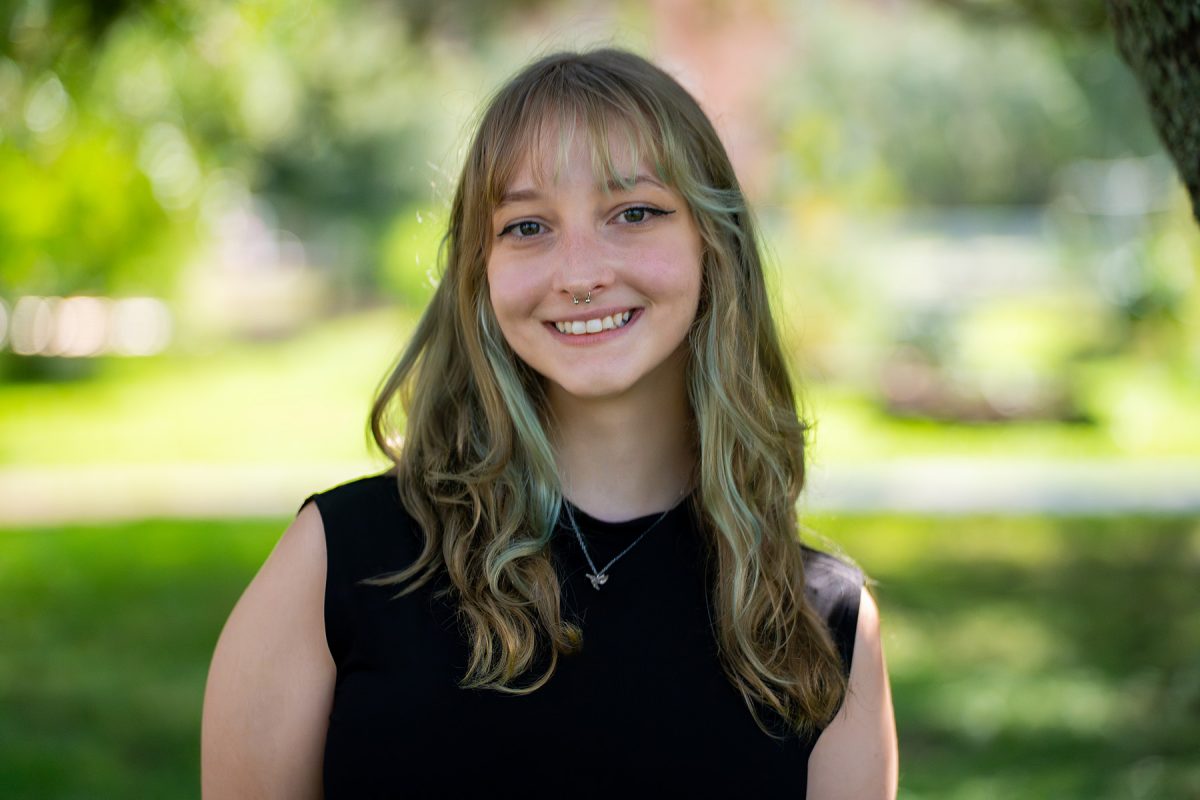
“Through FSU’s broad scope of electives, I have been able to take courses about everything from ornithology to physiological psychology, shaping my degree to align perfectly with my interests and academic goals.”
Fast Facts
- Paving paths: First-generation student
- Favorite class: Biology of Higher Vertebrates (Ornithology)
- Bright scholar: Is a CARE Illuminate Scholar
- Favorite place on campus: Seminole Organic Garden
- Plant-lover: Has an indoor herb garden
Kaya Simmons, a behavioral neuroscience student at Florida State University, found classes tailored to her interests in both biology and psychology at FSU.
Simmons has been heavily involved in research through the Undergraduate Research Opportunity Program, Honors in the Major and lab work.
Through her research, she looks for ways to protect the local environment while inspiring FSU students to connect with wildlife and care for their ecosystems. As president of the birding club, Simmons also partners with the university to reduce bird-window strikes on campus.
Why did you choose to attend Florida State University?
Campus is so beautiful, and the community is so welcoming, energetic and supportive. I was mainly drawn to the neuroscience program at FSU. As a student interested in both biology and psychology, the neuroscience major offered exactly what I was looking for in a degree. I have shaped my degree to align perfectly with my interests and academic goals by taking courses in everything from ornithology to physiological psychology.
The opportunities for research and formative experiences offered also drew me to FSU. Through the Undergraduate Research Opportunities Program, I secured a spot in a research lab during my first semester. Through Directed Individual Study and the Honors in the Major program, I have led research projects and learned skills to prepare me for my future research aspirations.
What is an academic achievement you are proud of?
Working under Emily DuVal, I developed a new way to use machine learning to measure complex animal behavior. Our focus is the lance-tailed manakin, a small bird whose males perform coordinated dances to attract females. By automating the analysis, we save future lab members hours of work and create opportunities to ask new questions.
For my Honors in the Major project in Emily Lemmon’s lab, I study how vasotocin, a hormone that affects neural communication, changes the reproductive state in female frogs. Female reproductive behavior has important evolutionary implications, but the mechanisms behind these choices remain unclear. Much of the research has focused on males, and vasotocin’s role can vary across species. My work aims to help close these gaps.
How have you served the FSU community?
I am proud of the Spoonbill Society, FSU’s birding club and our ongoing work in surveying bird-window strikes on FSU’s campus and advocating for effective solutions.
I am the president and co-founder of the organization and have grown our membership. I hosted on-campus and off-campus birding trips and educational workshops and have engaged over 100 students with birding for the first time. Getting students outside, teaching them how to identify local birds and helping them connect with their environment has been one of the most fulfilling initiatives I have been a part of at FSU.
I am part of a team of dedicated students who survey fatal bird-window strikes on FSU campus and working toward effective solutions. Our team has been documenting bird strikes for the past two years. It’s heartbreaking but important work. Through this work, I strive to make people feel like they can make a difference.
By implementing campuswide action to reduce bird strikes, I want to inspire others to take steps to create positive change in their communities and do their part in protecting the environment. I aim to help make FSU a more bird-friendly campus and raise more awareness of issues surrounding birds and their conservation.




